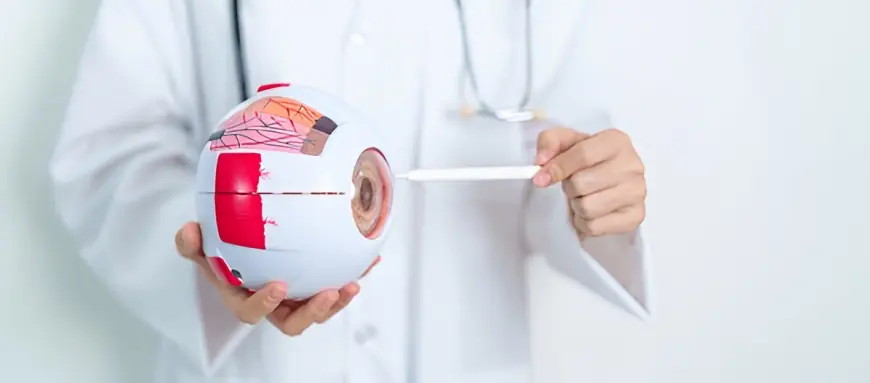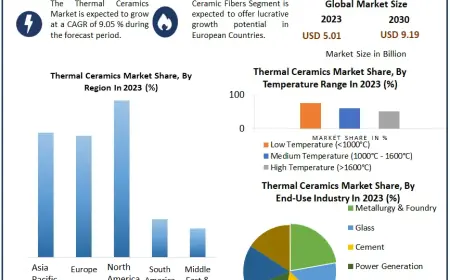Innovations in Cornea Transplant Surgery for Vision Restoration
Discover how innovations in cornea transplant surgery, like DMEK and artificial corneas, are transforming vision restoration.

Vision is one of our most cherished senses, yet millions worldwide face challenges due to corneal damage or diseases. Corneal conditions, such as keratoconus, scarring, and Fuchs' dystrophy, can lead to impaired vision or even blindness. For many, cornea transplant surgery has been a life-changing solution. Thanks to groundbreaking advancements in medical science, this procedure is now more effective, less invasive, and offers faster recovery than ever before.
Understanding Cornea Transplant Surgery
Cornea transplant surgery, also known as keratoplasty, involves replacing a damaged or diseased cornea with a healthy donor cornea. This procedure restores clarity to the cornea, allowing light to pass through and improving vision. Traditional corneal transplants have been highly successful; however, recent innovations have further enhanced outcomes, making the surgery more accessible and efficient.
Key Innovations in Cornea Transplant Surgery
The field of corneal surgery has seen remarkable advancements in recent years. Here are some of the most significant innovations:
1. Selective Lamellar Keratoplasty
Selective lamellar keratoplasty techniques, such as Descemet’s Membrane Endothelial Keratoplasty (DMEK) and Deep Anterior Lamellar Keratoplasty (DALK), focus on replacing only the damaged layers of the cornea rather than the entire cornea. This approach:
-
Reduces the risk of rejection.
-
Preserves healthy corneal tissue.
-
Accelerates healing and recovery.
2. Femtosecond Laser-Assisted Transplants
The introduction of femtosecond lasers has revolutionized the precision of corneal surgery. These lasers:
-
Enable highly accurate cuts and graft shapes.
-
Improve the fit between the donor and recipient cornea.
-
Enhance surgical outcomes and reduce complications.
3. Artificial Corneas (Keratoprosthesis)
For patients who cannot undergo traditional corneal transplants, artificial corneas provide a viable alternative. These bioengineered devices are particularly useful for:
-
Patients with severe corneal scarring.
-
Those with multiple failed transplants.
Advances in material science have improved the biocompatibility and durability of artificial corneas, offering hope to individuals who previously had no treatment options.
4. Tissue Engineering and Regenerative Medicine
The use of stem cells and tissue engineering in corneal treatments is a promising area of research. Scientists are exploring ways to:
-
Grow corneal cells in the lab for transplantation.
-
Stimulate the body’s ability to repair and regenerate corneal tissue naturally.
This approach could significantly reduce the dependency on donor corneas in the future.
5. Corneal Endothelial Cell Therapy
For conditions affecting the corneal endothelium, researchers are developing methods to inject lab-grown endothelial cells into the cornea. This minimally invasive procedure eliminates the need for a full transplant and has shown encouraging results in early clinical trials.
Benefits of These Innovations
These advancements in cornea transplant surgery have transformed the treatment landscape, offering numerous benefits:
-
Improved Success Rates: Advanced techniques minimize the risk of graft rejection and complications.
-
Faster Recovery: Patients experience shorter recovery times and quicker visual rehabilitation.
-
Enhanced Precision: Laser-assisted procedures ensure better alignment and fit, improving overall outcomes.
-
Broader Accessibility: Artificial corneas and cell therapies provide solutions for patients previously ineligible for transplants.
The Role of Cornea Transplant Surgery in Vision Restoration
Cornea transplant surgery remains one of the most effective treatments for restoring vision in patients with severe corneal damage. With innovations making the procedure safer and more efficient, more patients are benefiting from improved vision and a higher quality of life. Furthermore, advancements in diagnostics and surgical planning, such as optical coherence tomography (OCT), allow surgeons to tailor treatments to individual needs for optimal results.
Real-Life Impact: Stories of Transformation
Consider the story of Ravi, a 42-year-old teacher who struggled with vision loss due to keratoconus. Traditional treatments failed to improve his condition, but a successful DMEK procedure restored his sight, allowing him to continue his profession and enjoy daily activities. Similarly, Priya, a young artist, regained her ability to paint after receiving an artificial cornea, proving that these innovations profoundly impact lives.
Cornea Transplant Surgery in the Future
The future of cornea transplant surgery looks promising, with ongoing research and technological advancements paving the way for even better outcomes. Areas of focus include:
-
Personalized Medicine: Tailoring treatments based on genetic and environmental factors.
-
Nanotechnology: Enhancing drug delivery to prevent infections and rejection.
-
3D Printing: Creating custom corneal implants for individualized care.
Conclusion
Innovations in cornea transplant surgery are revolutionizing the field of ophthalmology, offering hope and new possibilities to patients with vision loss. From minimally invasive techniques to groundbreaking regenerative therapies, these advancements are making vision restoration safer, faster, and more effective. For those seeking life-changing results, the future of corneal surgery is brighter than ever, providing a clear path to better sight and improved quality of life.
What's Your Reaction?
 Like
0
Like
0
 Dislike
0
Dislike
0
 Love
0
Love
0
 Funny
0
Funny
0
 Angry
0
Angry
0
 Sad
0
Sad
0
 Wow
0
Wow
0


















































